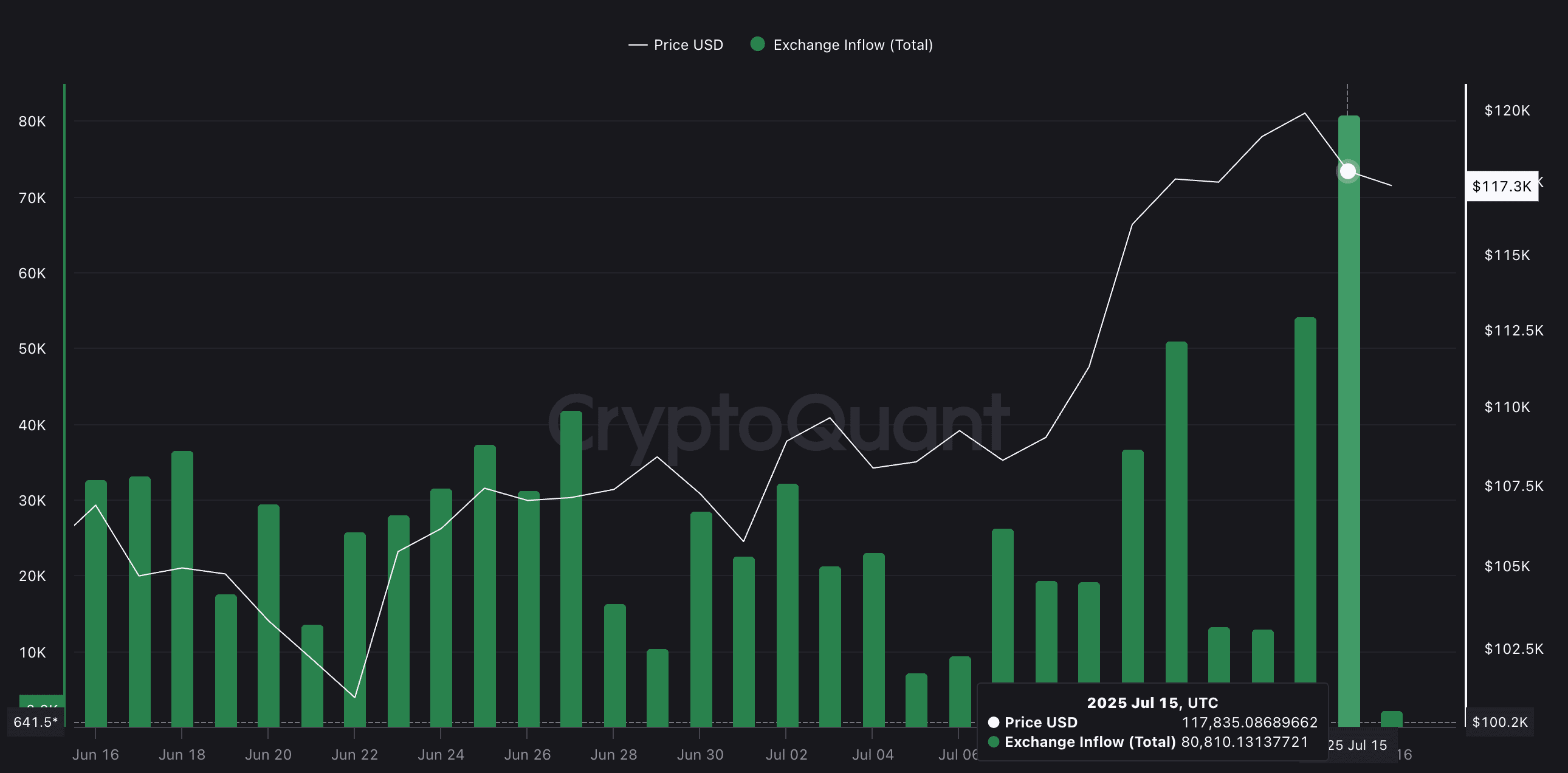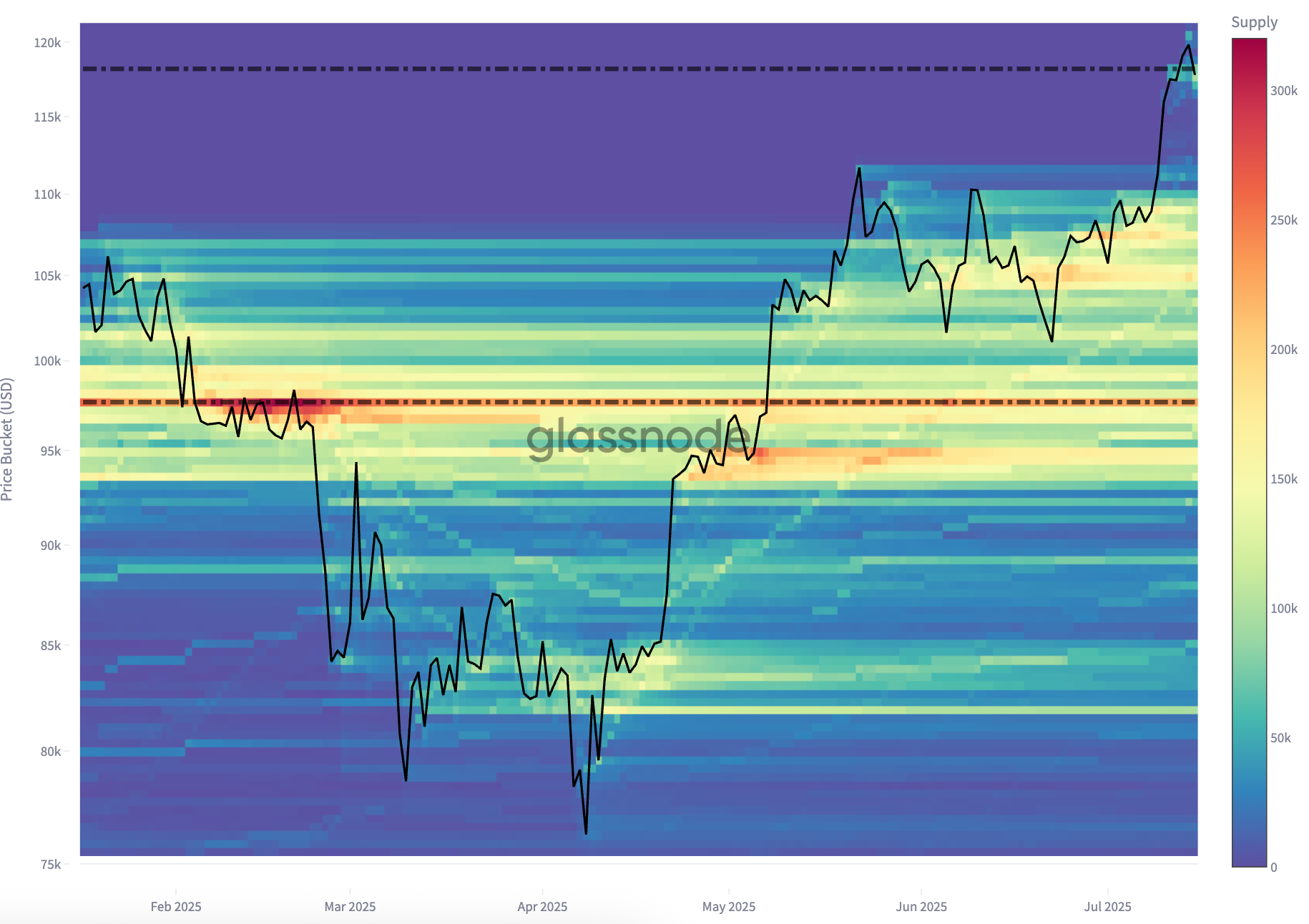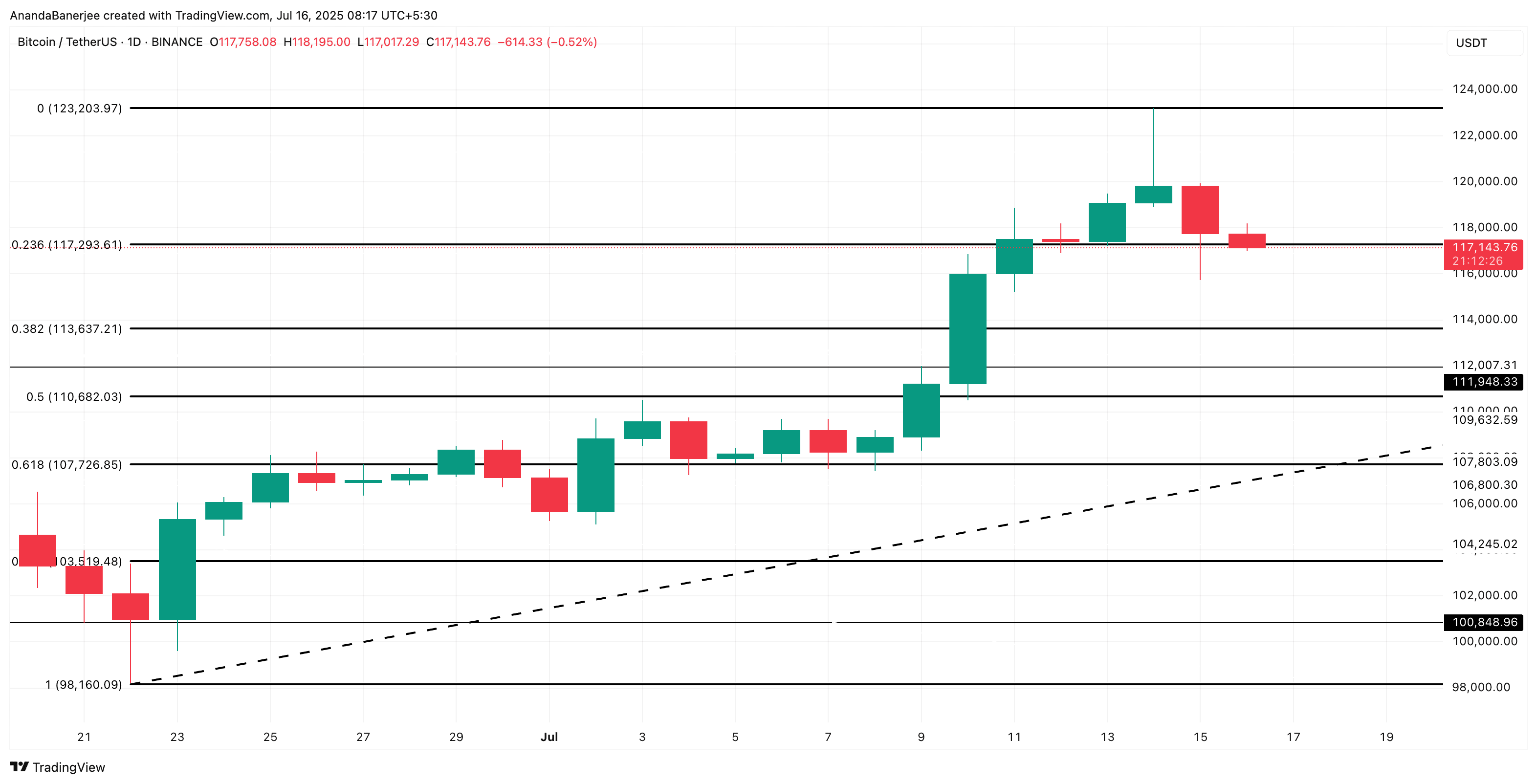After the CPI report was released on July 15, Bitcoin quickly lost its upward momentum and faced strong selling pressure across the board. From the recent peak of $123,203, BTC prices have dropped to $118,215 at the time of writing, corresponding to a correction of about 4% — a signal indicating that market sentiment is turning negative.
In the context of soaring cash flows into exchanges and weakening technical structure, the question arises: Is the next 8% decline an unavoidable scenario?
Cash flow into exchanges hits a peak
Data from CryptoQuant shows that on July 15, the market recorded over 80,810 BTC being transferred to centralized exchanges — the highest daily total since early 2025. In estimated value, this represents a capital flow worth over $9.4 billion into trading platforms in just 24 hours.
The cash flow and BTC price chart from CryptoQuant shows a simultaneous increase in BTC flowing into exchanges and a price decrease, a pattern often accompanied by significant selling pressure.
In terms of market behavior, a large amount of BTC being transferred from personal wallets to exchanges is often seen as a clear sign that investors are preparing to sell. In the context of weakening prices, such large capital flows not only reflect a risk-averse sentiment but also trigger a potential wave of sell-offs.

Historical accumulation zone: Support layer for the decline
According to the on-chain heatmap from Glassnode, Bitcoin has recorded strong buying activity at two main price zones:
$93,000 – $97,000
$101,000 – $109,000
In these areas, a large amount of BTC has been absorbed by strong buying pressure, creating 'accumulation clusters' — places where prices tend to receive natural support whenever the market corrects.
Notably, the zone of $107,000 – $109,000 stands out as an important technical and psychological milestone. This is not only the area where prices consolidated over several sessions before BTC broke out to its historical peak, but also where many investors opened long positions. If prices return to this zone during the decline, it could trigger renewed buying interest from both new investors and those looking to average down.

Overall, these accumulation zones reflect significant buying history, serving as an important 'buffer zone' that helps the market absorb selling pressure. If prices continue to fall deeply, the likelihood of a supportive reaction from these areas is very high.
An 8% decline is still possible
At the current moment, Bitcoin is trading around $118,215, with a slight increase of 1.3% in the past 24 hours but down about 4% from the recent ATH. Notably, this decline has caused prices to break below the important Fibonacci support level of 0.236 at $117,293 before bouncing back.
The Fibonacci retracement system is used to identify potential support/resistance areas in a trend. In this case, the levels are calculated from the June bottom near $98,160 to the recently achieved historical peak of $123,203, outlining points where price reactions might occur as the market corrects.
Looking deeper based on Fibonacci structure, the next level that analysts are particularly paying attention to is the 0.618 retracement level at $107,726 — often referred to as the 'golden pocket' in technical analysis. This is the zone where assets tend to form technical bottoms and bounce back after significant corrections, especially if the long-term uptrend remains intact.
Despite having two intermediate levels of 0.382 ($113,637) and 0.5 ($110,682), these zones lack clear accumulation data in the past and do not show significant buying pressure, thus the potential for support if prices continue to decline is relatively weak.

Conversely, the $107,726 level is not only an important Fibonacci threshold but also aligns almost perfectly with the strong accumulation zone of $107,000 - $109,000 — where significant buying flows have been recorded. The intersection of this technical factor and market behavior makes this the final 'natural defense line' that buyers may try to protect.
If Bitcoin slides from the current price range down to this level, the decline would be about 8%, a scenario that is entirely possible given that BTC inflows to exchanges are still strong, while the market structure continues to signal weakness.